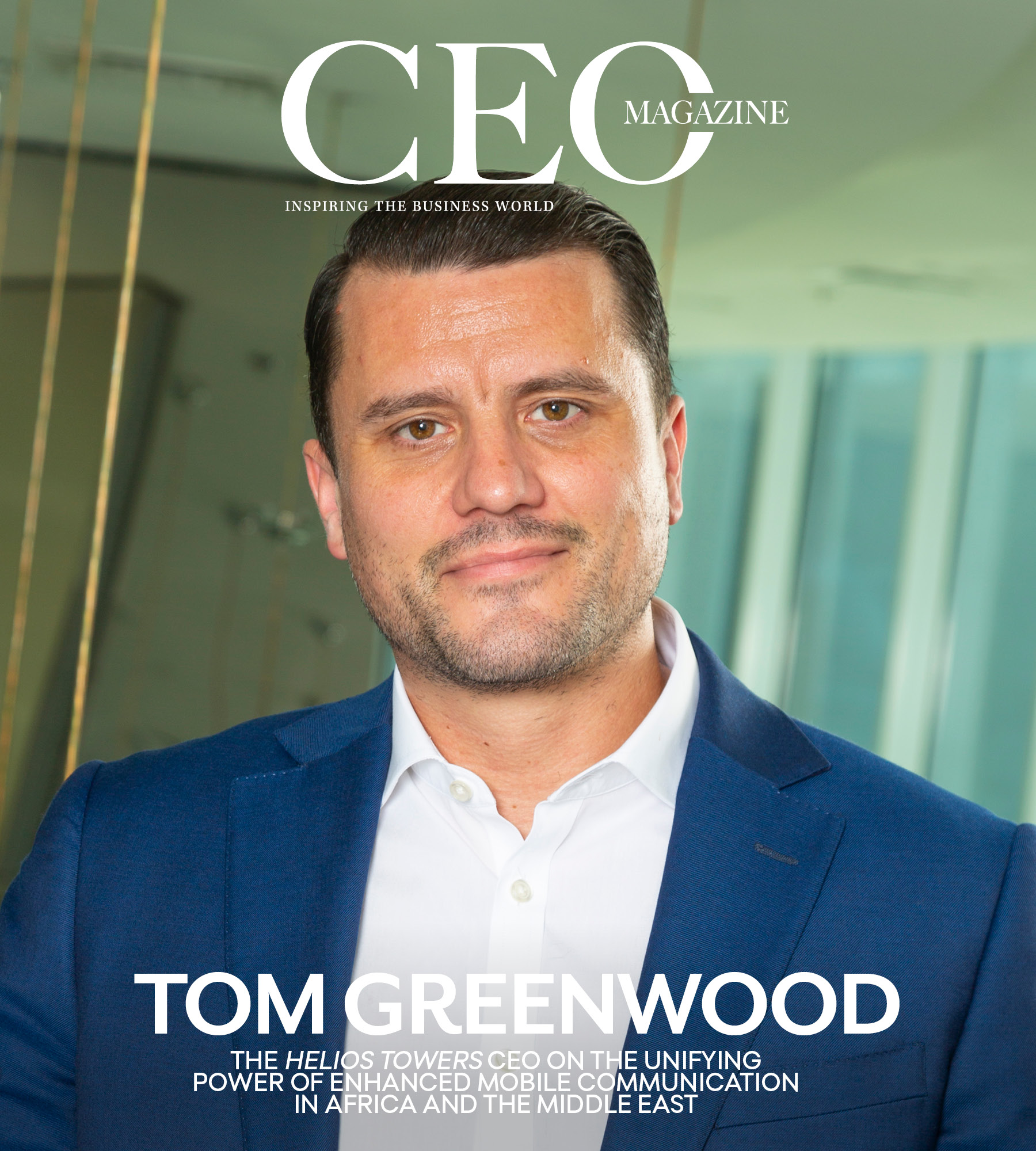Language
You can read the magazine in one of the following languages
The sun god Helios was once the thread that wove the ancient societies of Rhodes and Corinthia together. The people lived, worked, loved and died under his watchful eye, and he came to be known as Hyperion – the one above.
Such was the esteem in which Helios was held that eventually the towering Colossus of Rhodes was built in his image. At a height of 33 meters, the statue truly cemented Helios as the one above.
It is fitting, then, that the works of today’s Helios Towers also occupy the space above. Like its deified namesake, the independent telecommunications infrastructure company binds modern society together. At the same time, its network of telecommunication towers sit proudly on the skylines of Africa and the Middle East, much like the Colossus of ancient times.

“It’s quite a pivotal time in Helios Towers’ existence.”
In fact, since it was established in 2009, Helios Towers has made the drive and improvement of mobile communications across those regions its purpose, primarily through the creation, acquisition and operation of telecommunication towers.
Helios Towers works closely with major mobile networks operators to deliver effective and robust telecommunication infrastructure in high-growth markets; today, its towers provide mobile communication networks for more than 144 million people.
“It’s quite a pivotal time in Helios Towers’ existence,” says CEO Tom Greenwood, who after years at the company steered it through sunshine and rain since it went public in 2019. “At that time, a key part of our strategy was to expand geographically from the five countries we were in. Now, through significant expansion, we’re in nine countries, and we’ve doubled our asset base in the last two years. There’s been a lot of change.”
But Rome wasn’t built in a day. In 2010, the year the company was formed, it was still in startup mode and yet to own a single tower. And yet, even in these earliest days, Helios Towers’ reputation was already growing within the technology, media and telecom (TMT) sector.
“I was previously doing mergers and acquisitions in the TMT space, and I’d done a number of telecom deals in Africa,” he says. “Through that, I met some contacts, which led me to joining Helios Towers very close to the start of the business.”

It was the beginning of a journey that would take Greenwood right to the very top of Helios Towers.
Greenwood started his journey with Helios Towers in finance, where he spent 10 years, taking on the role of CFO five years into his employment.
After Helios Towers went public in 2019, he guided the company as COO for two years. “And then in early 2022 I became CEO. It’s been a very exciting journey so far and there’s a lot more to come.”
The announcement in August 2021 that Greenwood would step into the CEO role the following year gave him time to prepare. “I set about creating a new five-year strategy for the business,” he says. “It was very timely because of all the change and expansion, all the new assets and new people on board.”
In 2022, once he was in the CEO chair, Greenwood put his five-year sustainable business strategy into action. “It’s focused on three core pillars,” he says, “Customer service excellence, people and business excellence, and sustainable value creation.”
Helios Towers’ strap line, “22 by 26”, expresses Greenwood’s vision of taking the business’s current number of telecommunication towers from 14,000 to 22,000 by 2026. “We think that the services we bring and the overall sustainable value we create for our people, our customers, our partners, our communities and our investors has a lot of potential growth, and many opportunities to grow into,” he says. “So I’m very excited about the next five years.”
In the meantime, however, the business is enjoying a stellar performance. “We’re very much on track to achieve or even overachieve against our five-year ambitions,” Greenwood says. “And as we move into 2023 we’re a much bigger platform than we were just a few years ago.”
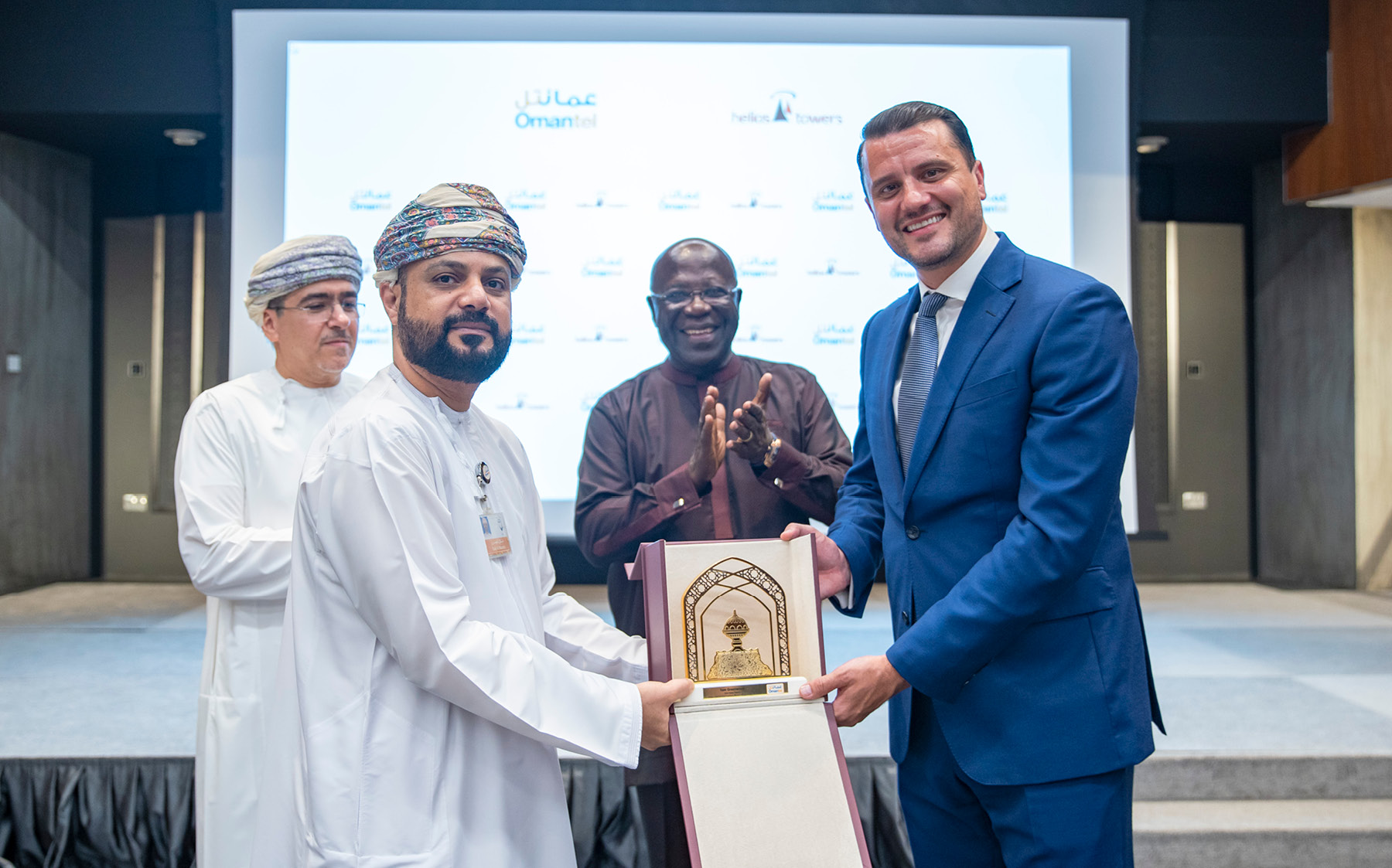
“We’re very much on track to achieve or even overachieve against our five-year ambitions.”
The Helios Towers story really begins in 2010, when the company purchased more than 800 sites in Ghana from mobile telco Millicom. The move placed the company as a pioneer of the independent tower model in Africa.
From there, the company moved into Tanzania and the Democratic Republic of the Congo, Congo-Brazzaville, Malawi, Madagascar, Senegal and eventually South Africa. In 2021, Helios Towers moved beyond Africa and into the Middle East with the acquisition of 2,519 Omantel locations.
“Oman is our first Middle Eastern market,” Greenwood says. “It’s very exciting to move into a new region and really contribute to the growth of telecommunications in the Middle East now as well as in Africa.”
No matter where Helios Towers is, however, the three pillars remain its strategy. “Everything we do is angled within those three areas,” Greenwood says. “Customer service is absolutely key for us. Our business is only successful if our customers are happy, and that happens by providing them the services they need.”
As a result, Helios Towers is a very customer service focused organization. “We always strive to provide best-in-class customer service to all of our clients,” he says. “People and business excellence is how we achieve that.”
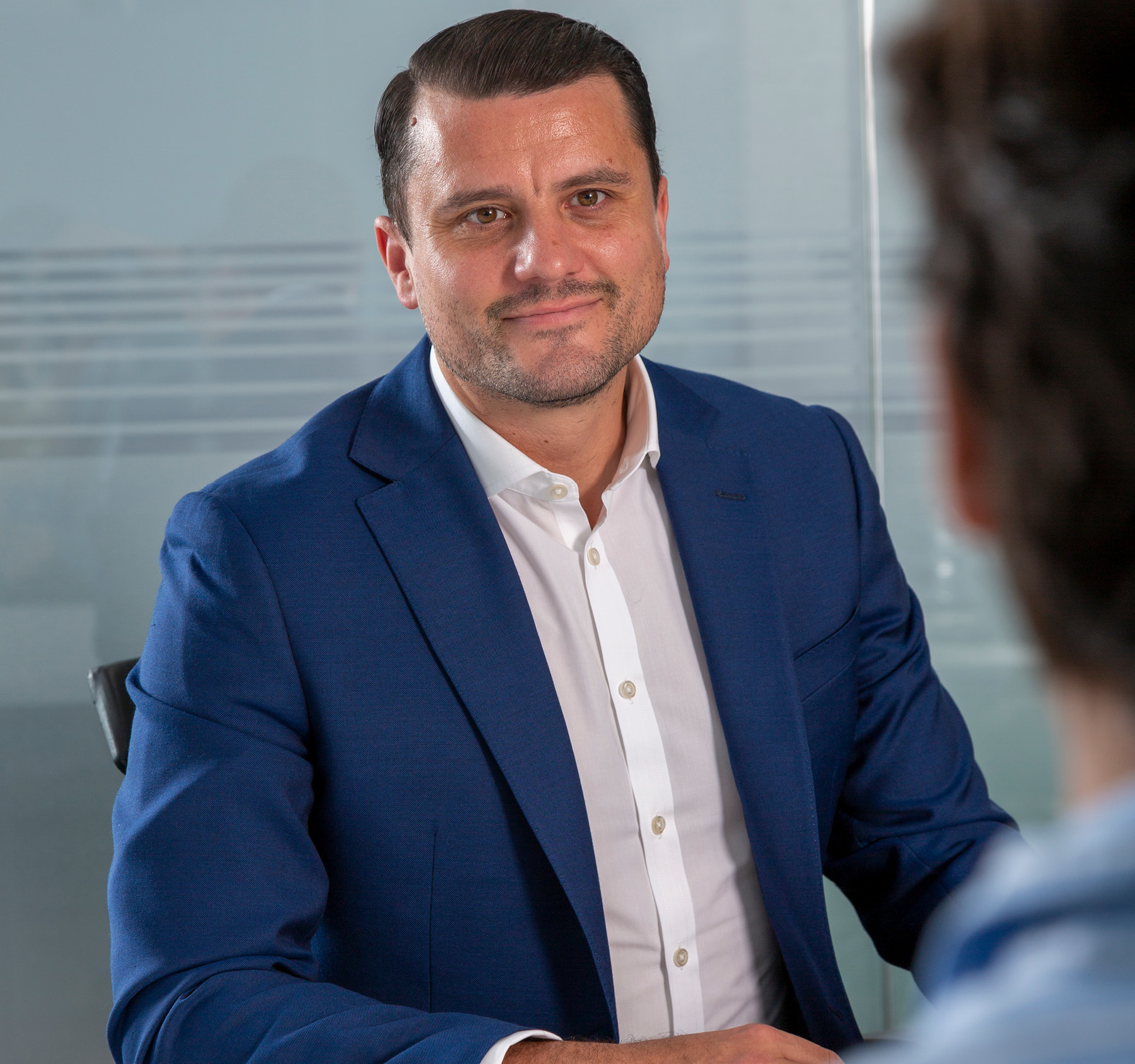
“We always strive to provide best-in-class customer service to all of our clients.”
Despite being a towers company, Greenwood believes Helios Towers’ true strength is its people. “Our biggest assets are our people,” he says. “If we have the best people and we empower them, train them and develop them, then we’ll have an absolutely fantastic business, top business processes and therefore deliver exceptional customer service.”
From there, he adds, it’s easy to create sustainable value for every one of Helios Towers’ customers. “That’s if we do all of that well, which we do.”
But the company’s benefits extend beyond its stakeholders. “We drive digital inclusion for our environments and the communities around us through our telecommunication towers,” Greenwood says. “Through sharing infrastructure, which inherently reduces carbon emissions, we provide environmental benefits.
“Our infrastructure sharing model enables reduced cost of roll out and faster development. We have an inherently sustainable business model, but we want to do more and continue on this journey.”
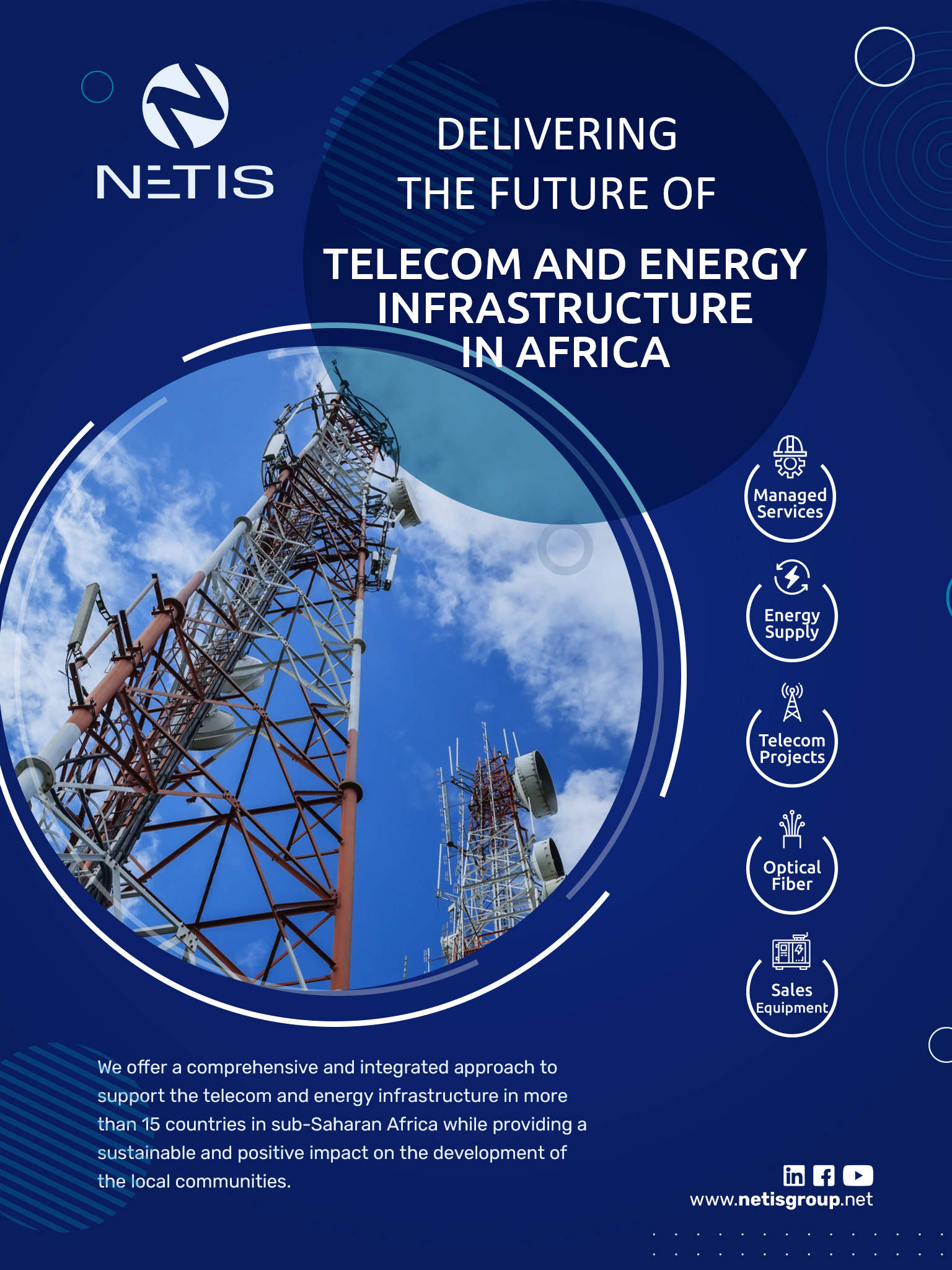
Helios Towers also makes an impact on local poverty through the employment of local people. “We have a very big focus on the localization of our teams across the business,” he says. “I personally believe – and we believe as a business – that localization leads to the most sustainable long-term value creation. So across our group today, 97 percent of our colleagues are from the markets in which they operate – talented local colleagues driving local growth.”
That includes, he adds, nearly the entirety of Helios Towers’ managing directors, finance directors, sales directors and legal directors. “That’s a big part of our sustainability focus.”
The care and thought with which Helios Towers has approached sustainability gave the business a strong foundation from which to deal with the COVID-19 pandemic, which presented the entire world with an unprecedented challenge.
“That was an experience that none of us have ever really lived through on such a scale,” Greenwood says. “And I was really proud to work at Helios during that time because together with our customers and partners, we kept the mobile communication networks going.”

“We have very long-term relationships with our customers, we have long-term contracts in place, and we’ve embedded escalators in those contracts to protect against inflation and energy price rises.”
That’s something of an understatement, given the radical expansion of mobile networks and telecommunication channels demanded by the ‘new normal’ of remote working dictated by COVID-19 lockdowns. “People came to really rely on the mobile service to communicate, for banking, for shopping, for health, and it’s something I think demonstrated the criticality of our business and our stakeholders.”
Helios Towers was classified as an essential service in each of the markets in which it operates, allowing it to keep things moving. “We were able to demonstrate resilience in the face of a challenging situation, and also the ability to operate under these conditions. And that’s something for which I’m extremely proud of our team.”
With the COVID-19 pandemic in the rear view mirror for many, the state of the global economy has taken the virus’s place as the most pressing issue facing businesses. For Helios Towers, inflation and the cost of capital have emerged as twin threats it’s working hard to stave off.
“Again, the great thing about our business is its resilience in times like these,” Greenwood says. “We have very long-term relationships with our customers, we have long-term contracts in place, and we’ve embedded escalators in those contracts to protect against inflation and energy price rises.”
From an investor’s point of view, he says, Helios Towers presents as a very resilient and robust business in times of economic woe. “I think that’s really being demonstrated at the moment through both our operational and financial performance, and we’ll continue to be agile and adapt to shocks in the external system.”
“You’ve got to have a vision, you have to be able to turn that vision into a strategy you can execute, and all of those elements require different parts of your brain, different ways of thinking.”
The supply chains that were decimated worldwide by COVID-19 lockdowns and restrictions have proven another external challenge; Greenwood says it was just another test of Helios Towers’ agility. “Lead times for equipment have been significantly increased, but we’ve adapted our supply chain so that we’re ordering earlier and speaking to customers to preempt what they might need.”
Instead of three months’ lead time of years past, it’s now closer to six-to-nine months, but he says it’s simply a matter of forward thinking and prudent planning. “We’ve made the right operational changes to accommodate, and as a consequence, our business performance is showing real strength and, I believe, will continue to do so for the foreseeable future.”
To have both hands on the wheel of such a vessel in such stormy seas would be a test for even the most hardened captains, but Greenwood says successful leadership is a matter of vision. “You’ve got to have a vision,” he says. “You have to be able to turn that vision into a strategy you can execute, and all of those elements require different parts of your brain, different ways of thinking.”
It’s also important to lead by example. “I used to play a lot of football as a kid, and being the captain of the team meant leading by example,” he says. “I’ve carried that into business leadership, and I’ve learned that you have to empower the people around you. You have to have a lot of trust, you have to listen and you have to learn.”
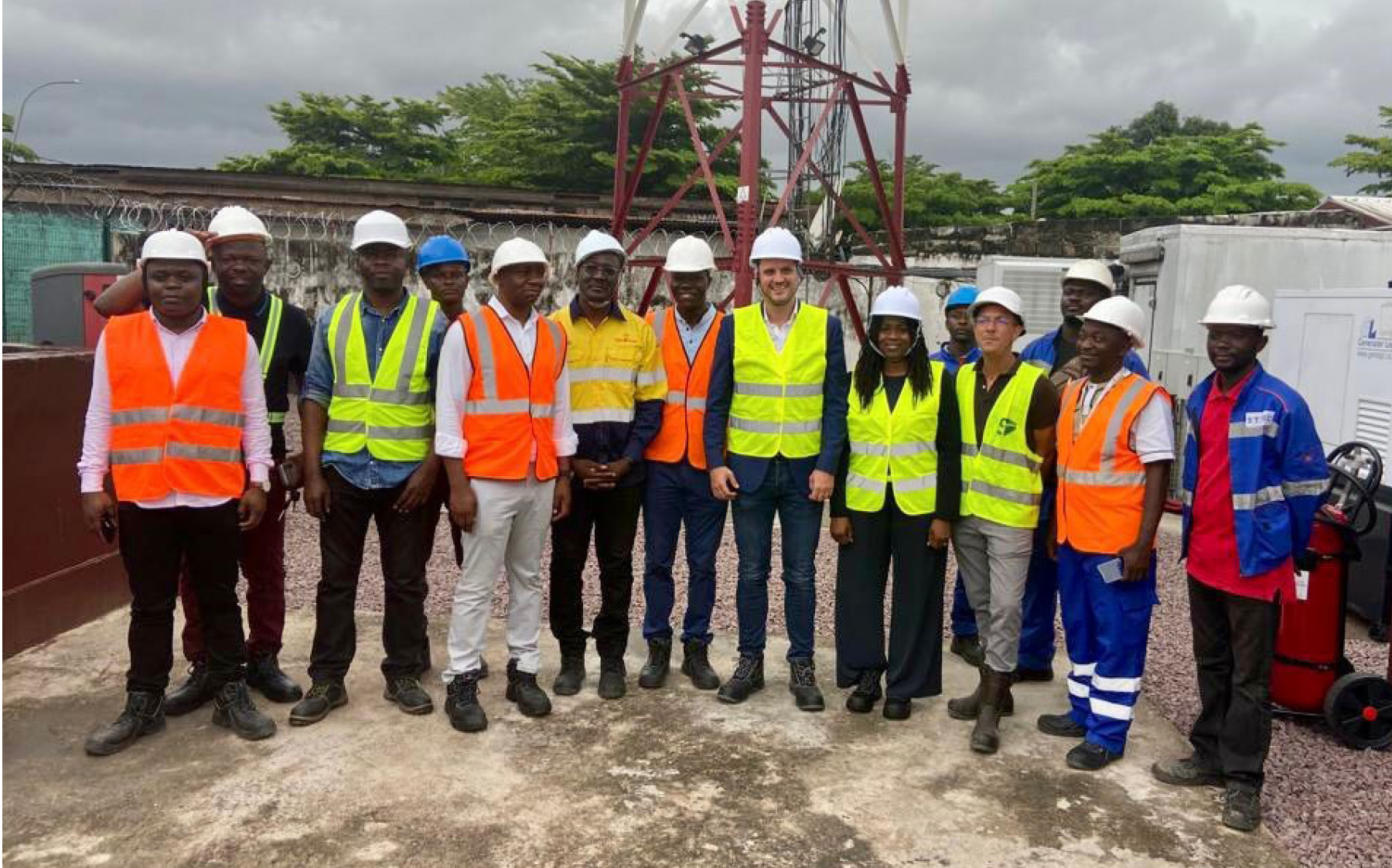
“A big part of our business ethos is diversity, equality and inclusion, so that’s helping to drive us forward”
The wrong attitude will kill successful leadership before it’s even had a chance, he says. “One of the worst traits you can have is arrogance and thinking you don’t have to listen to anyone around you. You can always learn, you must always listen, and that puts you on the road to good leadership.”
Effective leadership also means effective partnership, and the Helios Towers family is made up of partners and suppliers of all sizes. “We work with our partners day in, day out to achieve the goals of top class customer service and experience for the mobile operators in our network.”
A mantra of ‘one team, one business’ unites around 14,000 indirect staff in Helios Towers’ orbit. “These are largely maintenance and security partners for our sites, and as you can imagine those partners are absolutely critical to what we do.”
No less critical are Helios Towers’ suppliers, who provide a mix of equipment and service. “We have around 60 core strategic suppliers across our group,” Greenwood says. “In recent years diversifying our supply chain has become particularly pertinent, but even prior to COVID-19 we didn’t rely on any one country or provider. Today we’re really seeing the importance of such diversity, and the network we have has really paid off for us.”
Right now, Greenwood’s vision of the five-year sustainable business strategy has put Helios Towers on a road to success. “I’m confident we’ll deliver on that vision over the next five years,” he says. “A big part of our business ethos is diversity, equality and inclusion, so that’s helping to drive us forward.”
“Population coverage, digital inclusion and poverty reduction all go hand in hand, and through the proliferation of our towers and our network we can achieve big things in those areas.”
There’s also a firm commitment to carbon reduction; Helios Towers has announced a 46 percent carbon reduction per tenant by 2030, and an ambition to achieve net zero by 2040.
That’s all in the future, though. For now, Greenwood is focused on the expansion of towers by 2026. “Population coverage, digital inclusion and poverty reduction all go hand in hand, and through the proliferation of our towers and our network we can achieve big things in those areas,” he says.
“By 2026, we hope to cover in excess of 250 million people. That’s a large amount of people, a big responsibility for us, and it’s very humbling to know so many people rely on the work we do. We’re absolutely committed to deliver for them.”
